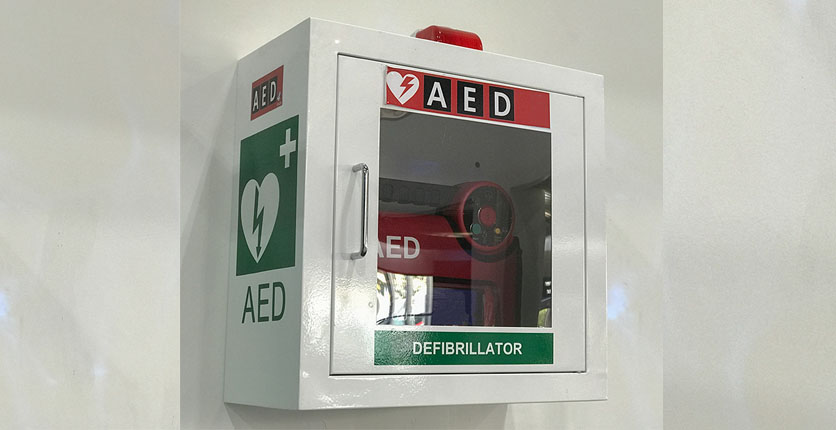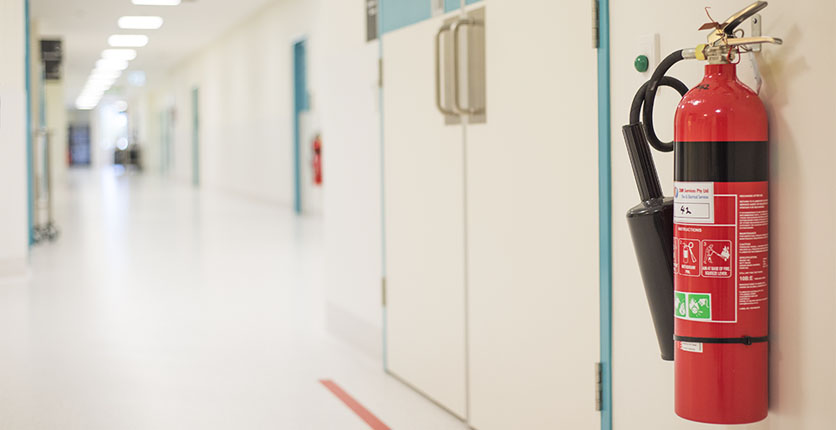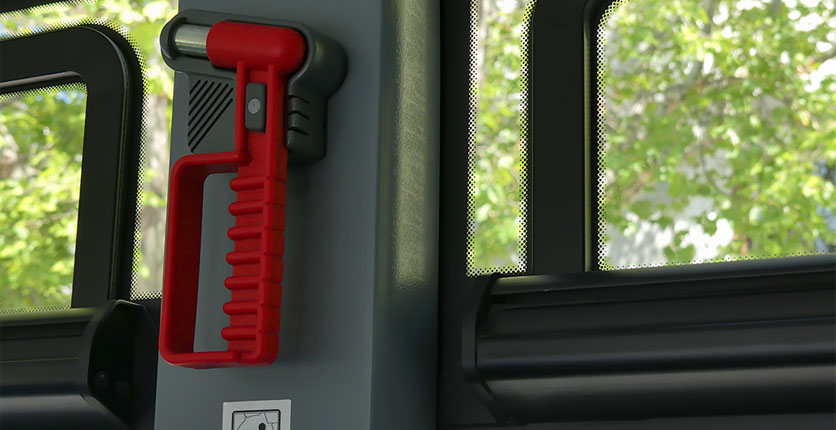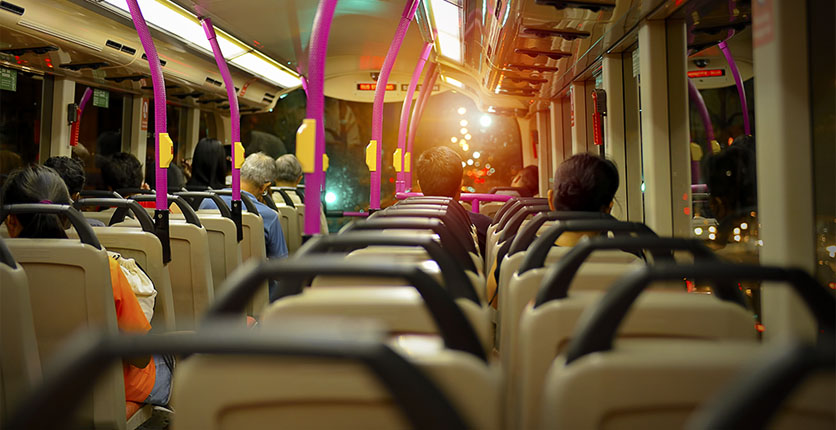We all know Singapore is a safe place. In fact, the Lion City is the world’s second safest city, after Tokyo, according to the 2019 edition of the Economist Intelligence Unit’s (EIU) Safe Cities Index (SCI) report. That’s probably why everyone can head out everywhere in public, even late into the night, with peace of mind.
But, accidents and incidents do occur. What if you find yourself in a situation where you need to lend aid to someone who is hurt or in distress? Worse yet, if there are few people around to assist you, or if you are unable to get to the nearest clinic or hospital, or… you get the drift. Every second counts; luckily, there are life-saving equipment and devices to be found in public spaces around you if you just happen to know where to look and how to use them. And nope, they aren’t the ubiquitous hand sanitiser dispensers (though these humble devices do help keep you safe). Here’s a 101 on the types of publicly available equipment that could save yours or someone else’s life.
Disclaimer: The information stated below are general descriptions about various types of life-saving equipment and devices, and their use. These descriptions are not meant to replace or referenced as an official guide to the use of such equipment and devices. Please refer to the relevant authorised agencies and government bodies to obtain the official and complete information, guidelines or instructions.

Automated External Defibrillator (AED)
In case you didn’t know, an AED is a medical device that can analyse the heart’s rhythm and if needed, deliver an electric shock (defibrillation) to help “restart” the heart of someone who has suffered sudden cardiac arrest. Coupled with cardiopulmonary resuscitation (CPR), it can help increase the victim’s chances of survival. Don’t worry even if you haven’t undergone any life-saving training; the device comes with voice-guided step-by-step instructions. What’s great too, is that this device (encased in a white box) can be readily found at the ground floor lift landings of HDB flats, at MRT stations and even on some taxis. But what’s even better, is if you try learning CPR as well!
Visit srfac.sg/directory/training-centre, www.scdf.gov.sg/savealife or site.daretosave.sg to find out more about CPR and AED training.

Police Beacon
Yes, jogging through parks and along waterways in the dead of the night in SG is relatively safe. Now, you can even feel more secure. A “police beacon” prototype has been launched in December 2020 for a one-year trail. Sited in Punggol Waterway Park Connector – a second is upcoming at Sengkang Riverside Park – this structure is built to assist parkgoers who may need help. Equipped with closed-circuit cameras, a siren, speakers, blinkers, floodlights and a communications button that is linked to the police operations command centre so parkgoers can get to talk with police officers, it also holds an AED (see above) for members of the public to help those who have suffered a cardiac arrest. Just don’t expect it to be Doctor Who’s TARDIS and try using it for fun, because if the trail proves successful, more will be built at other less accessible or peopled locations.

Fire Extinguisher
We might recognise this as a red tubular canister with a black discharging nozzle and hose. But not all extinguishers are made equal – there are ones made for specific kinds of fires. So how do we know which ones to use for what type of fires? Check for the classification labels – A, B, C, D or F – the instructions, and also any accompanying symbols or illustrations on the data plate of the fire extinguisher’s body casing. While we won’t go into the details regarding the extinguishing medium in each type of fire extinguisher, it is helpful to know what the classification labels are:
Classification Labels
Class A – for fires involving combustible materials such as wood, paper, cloth, plastics, rubber and other organic materials. Possible accompanying symbol or illustration: a dustbin or sticks of wood in flames.
Class B – for fires involving flammable liquids. Includes Solvents, thinners, paints, varnishes and other similar materials. Possible accompanying symbol or illustration: a gas or fuel can.
Class C – for fires involving flammable gases and electrical equipment. Possible accompanying symbol or illustration: a plug or electric spark.
Class D – for fires involving flammable metals, like potassium, sodium, lithium, zirconium and titanium. Possible accompanying symbol or illustration: normally no pictograph is used, but there might be one with a metal beam and flames.
Class F – for fires involving cooking oil and fats, such as vegetable oils, animal oils, fats, and cooking equipment. Class F fires are also known as Class K fires (where “K” stands for Kitchen). Possible accompanying symbol or illustration: a frying pan in flames.
Even in the event of fire, it’s advisable to read what’s on the extinguisher – the last thing you want is to use the wrong one and cause more damage or harm!
The most common fire extinguishers found in public places are “Class ABC” types that can deal with multiple kinds of fires. Usually, extinguishers are installed near exits or paths from a space leading to one, or sited near areas of risk, such as beside ATMs and card payment machines, on buses close to the front door and on MRT trains at the end of each train car. They should be conspicuous to the eye – look for fire extinguisher signages and metallic or red cabinets that could house these extinguishers. Once you find one, use the P.A.S.S method: Pull out the safety pin, aim the nozzle at the fire’s base, squeeze the lever, and sweep across the fire while discharging the extinguisher.
Visit www.scdf.gov.sg for more information on fire safety tips (including how to operate a hose reel if a fire extinguisher isn’t enough!)

Emergency Hammers
Window breaker, safety hammer, glass hammer: this tool of many names serves one very good purpose, and that is to break the windows of an automobile. The next time you ride a bus, look at the frames between the windows and you will spot what looks like a metal hammer with a sharp tip and a red-orangeish handle. And why would you need this, ever? If the bus gets into an accident and the doors jam, or the bus overturns, this nifty little tool might just get you out from your harrowing plight. Simply remove the hammer from its holder, grasp it firmly to strike the window at the side or in the centre to shatter the glass, and use the side of the hammer’s top to push out the glass pieces before escaping.
Featured image: Shutterstock







